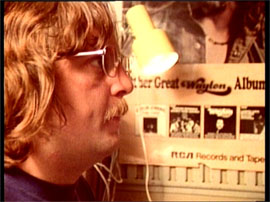Union rules permit a single musician to conduct himself. All union dates appoint one of the playrs on the date to be conductor. That person gets double-rate. [...]
The "conductor" title usually goes to the contractor, that is the cat who calls all the other cats. By way of example, let's say we need to put some horns on a track or two. A phone call goes out to "the horn guy" for a horn session date using, say, three 'bones, two trumps' and a flute/sax. Then it's up to "the horn guy" to assemble his people based on their schedules and abilities and the chemistry between the ensemble players. Not always the same people. When the date does happen, he represents the "union" aspects of the group. He calls the breaks and overtime. He fills out the paperwork and submits to the union. The union sends out a bill for services. For this, the conductor (contractor) gets paid double for the date. Remember, this is Hollywood—a recording haven—where people make a complete living being session side men, maybe doing three or four different three-hour sessions per day, all over town, on different types of music.
[...] Here's an interesting union rule. Suppose you are a string player. You come to the date. Your part is recorded. Then the tape is backed up and you play the same part again. As far as the union is concerned, it's the same as hiring another string player, i.e., one player doubling on two tracks equals two players on one track. So, if you have twenty string players playing background on a song, then you record the same notes again on another track (to thicken the sound) you must pay each player twice (and the conductor four times). It's as if you hired fourty string players to play it once. This can get to be rather pricy. The rate is around $400.00 per three-hour session. Double is $800 per player. Not bad money for the musician, but for the studio—let's see—twenty strings times two, times $400, equals $16,000 just for the players. Add to that the engineers and studio costs you are up to twenty grand!! just for a string overdub!! Now you know why albums cost so much!
Here's another union rule. Suppose you get a call to play the theme for a TV series. It's a big date with horns, percussion, strings, and a couple of harps. Big bucks. You play the entire theme. As far as the union is concerned, every time that TV show has a new episode and requires a theme (usually the same theme) for the beginning of the show, the studio can either hire new musicians to play the theme again or pay the original musicians for each new airing of the show. So if you are fortunate enough to play on the first theme, and the show runs for a typical 20 or 30 episodes for the broadcast season, expect to get a $400 check in the mail for each new airing as if you played all 20 or 30 themes, even if you never pick up your instrument again. Not bad huh?
Now let's bring this discussion back to Brian Wilson. When he started, all the studios were unionized, including the engineers. (I myself am a member of IATSE, local 695 Hollywood.) He could deal with the musian's union. He was even part of that. But a typical Columbia or Capitol studio session would find the union engineers mercilessly stopping a session for their break when the red-second-hand hit the 12 o'clock mark exactly. I mean, they didn't care if you were recording the best lead since sliced bread. Even if you only had three notes to go—BANG—the recording engineer would press the stop button, the mixer would close the master fader, and walk away to their smoke and coffee. This would drive poor Brian up the wall. I mean, you can't turn on creativity like a faucet. As a musician, you know what "getting into a groove" is all about. So Brian has a studio full of musicians or even full of his BB group of singers—they have finally, after fifty minutes of rehearsal, found their "groove" and—BANG!! It's break time for the engineers. The musician's will continue (into overtime of course) but not the union engineers. You may have lost that "groove" forever.
This is the reason that Brian ventured over to Western (at 6000 Sunset Blvd.), one of the first non-union or "independent" studios to spring up in Hollywood. There he met Chuck Britz and fell in love with Studio 3. No more stopping just because the clock said 12:00. Now when he found his "groove" he could play it out. I would venture to say that one of the reasons the so called "smile sessions" came to be incomplete was because of all the false starts from union rules of those studios. And to top things off—Brian could not touch the console at a union studio. I have seen a Columbia Studio engineer actually slap Brian's hand when, out of desperation, he would reach to make a fader move for a cue that the engineer forgot, while recording a live date. Very frustrating for talent such as Brian's. Over at Western, Chuck welcomed Brian's involvement—and they both went on to make many great records.
